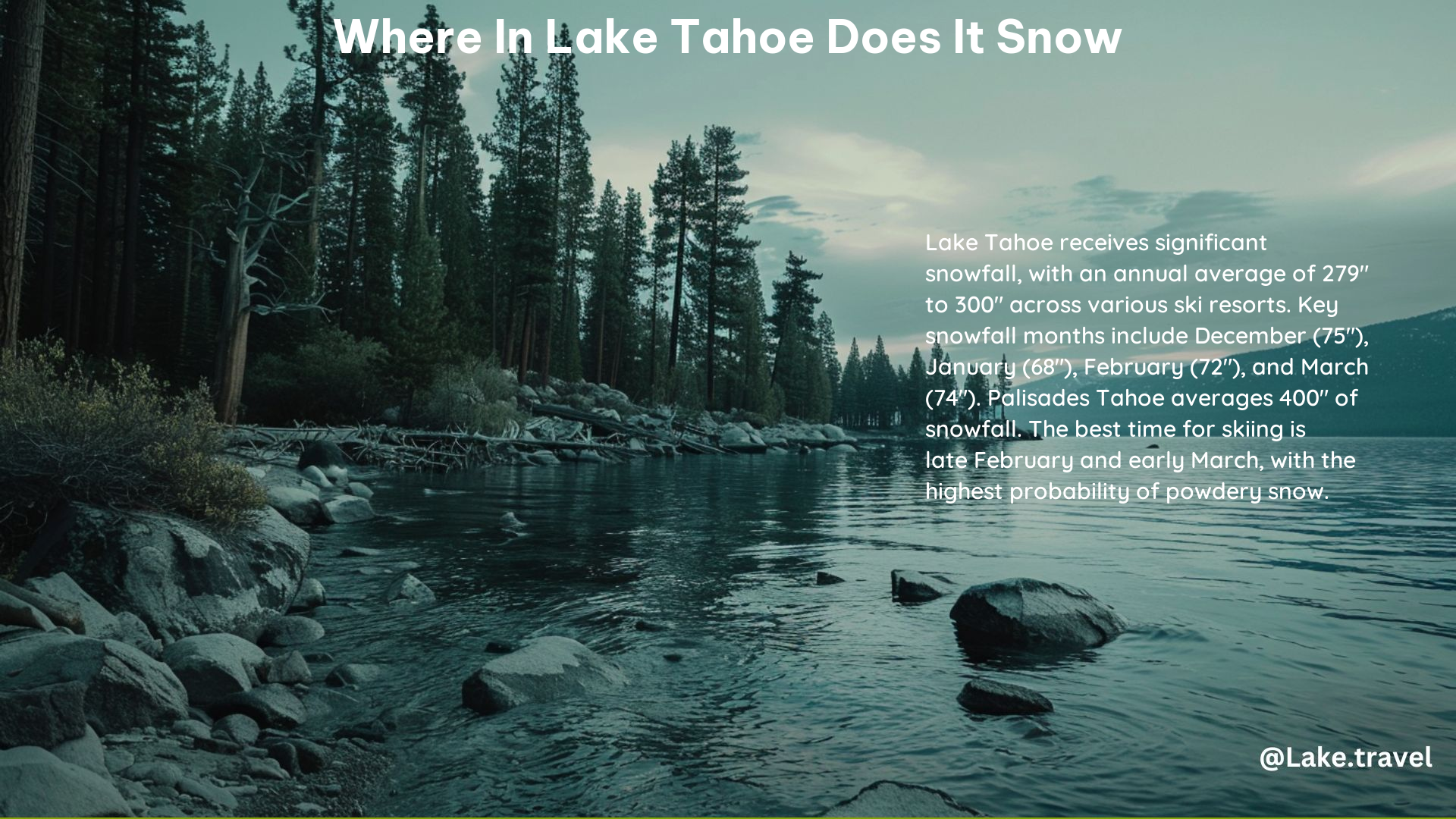Lake Tahoe, nestled in the Sierra Nevada mountains, is renowned for its abundant snowfall, making it a premier destination for winter enthusiasts. From the picturesque South Lake Tahoe to the renowned Palisades Tahoe resort, the region experiences significant snowfall throughout the winter months, with some areas receiving over 400 inches of snow annually.
Snowfall Amounts
The snowfall in Lake Tahoe varies across different locations, with some areas receiving more than others. Here’s a breakdown of the average annual snowfall in key areas:
| Location | Average Annual Snowfall |
|---|---|
| South Lake Tahoe | 300 inches |
| Lake Tahoe (overall) | 279 inches |
| Palisades Tahoe | 400 inches |
As you can see, the Palisades Tahoe resort, formerly known as Squaw Valley, receives the highest average annual snowfall, making it a popular destination for skiers and snowboarders.
Best Snowfall Months

The winter months in Lake Tahoe are characterized by significant snowfall, with some months seeing more than others. Here’s a breakdown of the average snowfall by month:
- December: 75 inches
- January: 68 inches (with a notable exception in 2017 when 238 inches fell)
- February: 72 inches
- March: 74 inches (the biggest snow month on average)
- April: 30 inches (marking the beginning of the end of the ski season)
- May: 11 inches (with some years seeing over 40 inches)
These figures demonstrate the consistent and substantial snowfall that Lake Tahoe experiences throughout the winter, making it an ideal destination for snow-based activities.
Ski Resorts
Lake Tahoe is home to several renowned ski resorts, each offering unique experiences and snow conditions. Two of the most popular resorts are:
Heavenly Ski Resort
Heavenly Ski Resort, located in South Lake Tahoe, provides daily snow reports and mountain weather updates to help visitors plan their trips and enjoy the best snow conditions.
Palisades Tahoe
Palisades Tahoe, formerly known as Squaw Valley, offers a comprehensive snowfall tracker with detailed records of snowfall at different elevations, allowing visitors to make informed decisions about their ski or snowboard plans.
Planning Your Trip
When planning a trip to Lake Tahoe, it’s essential to consider the ski season and the best time to visit for optimal snow conditions. Here are some key points to keep in mind:
- Ski Season: The ski season in Lake Tahoe typically starts in November, but good snow conditions are usually found by early December.
- Best Time to Visit: Late February and early March offer the highest probability of powdery snow, making it an ideal time for winter enthusiasts to visit.
Historical Snowfall Data
For those interested in the long-term snowfall trends in Lake Tahoe, Palisades Tahoe provides detailed historical snowfall data for the 2022-2023, 2021-2022, and 2020-2021 seasons. This information can be valuable in planning your trip and understanding the region’s snowfall patterns.
Additional Resources
To stay up-to-date on the latest snow conditions and plan your Lake Tahoe adventure, consider the following resources:
- OnTheSnow: Offers daily snow reports and ski conditions for South Lake Tahoe and Lake Tahoe.
- Visit Lake Tahoe: Provides a comprehensive snow report and guide to help plan your trip.
By understanding the specific details of where it snows in Lake Tahoe, you can better plan your winter getaway and make the most of the region’s abundant snowfall.
References:
– https://www.onthesnow.com/south-lake-tahoe/skireport
– https://www.skiheavenly.com/the-mountain/mountain-conditions/snow-and-weather-report.aspx
– https://www.palisadestahoe.com/mountain-information/snowfall-tracker
– https://www.onthesnow.com/lake-tahoe/skireport
– https://visitlaketahoe.com/winter-sports/best-snowfall-months-at-lake-tahoe/
